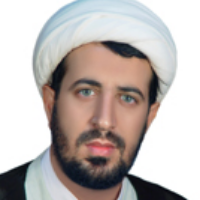Comparison of Transoxiana (Mawara ul nahr) Theological School with Kufa and Qom Theological School up to the fifth century AH
Imamites Theology can be studied in different geographical locations as well as historically. On this basis, and with the aim of not conducting research on the comparison of other theological schools with the Transoxiana (Mawara ul nahr Theological School, this article has been reviewed. The theological schools of Kufa and Qom have been selected because of their special place in theological schools and because of their contribute and influences with the transatlantic field. This research shows by comparative and analytical method that these schools have in common in terms of the common thoughts of some scholars and the way of intellectual and influential currents of these scholars to the other side of the river and in terms of interaction with Sunnis and moderate orientation from the east. They are different from each other. It was also found that most of the commonalities of Transoxiana school were with Qom school; However, the reluctance of some of Ibn Walid's students, such as Haidar ibn Muhammad ibn Naeem Samarqandi and Ja'far ibn Ali ibn Ahmad Qomi, to disregard the theory of the Prophet's mistake, as well as their lack of support for Sa'd al-Ash'ari Al-Nahr, which was opposed to the current of thought of Hisham Ibn Hakam, is one of the points of difference between the two schools.
-
The sources of ijtihad in the thought of Ahmad bin Muhammad bin Khaled Barqi in the theological school of Qom
Ali Reza Zakizadeh Renani *, Zahra Sajadi
Biannual journal of Theology journal, -
Types of Treating Interpretative Narratives in Isfahan’s Interpretative School
AliReza Zakizadeh Renani *, Mohsen Khoshfar, Ehteram Sadat Mousavizadeh
Biannual Journal of Research in the Interpretation of Quran,


